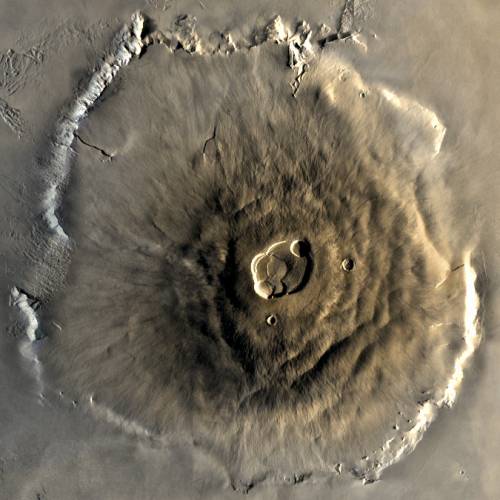
Olympus Mons on Mars: the largest volcano yet known in the Solar System. It reaches 24 Km in height from base to summit, rising 27 Km above the Martian datum line. (The datum line is Mars' equivalent of Earth's sea level, marking a level approximately 4 Km above the topographically lowest point on Mars - in the Hellas impact basin in the southern hemisphere.)
Like the other large volcanoes in the Tharsis Montes region, Olympus Mons is a 'shield' volcano. These are formed by eruptions of very liquid lava, which runs for great distances before cooling and solidifying. This gives the flanks of shield volcanoes a characteristic low-gradient profile. Indeed, the base of Olympus Mons is up to 624 Km across (so the gradient averages ~1:25). There is a steep escarpment running around most of the base of the volcano, which ranges from 3 to 6 Km in height. The volcanic vent at the summit has collapsed several times, forming a complex caldera 80 Km across on the longest axis. Several impact craters are visible on the volcano's flanks.